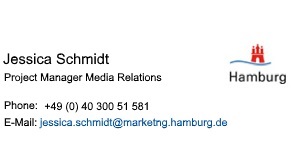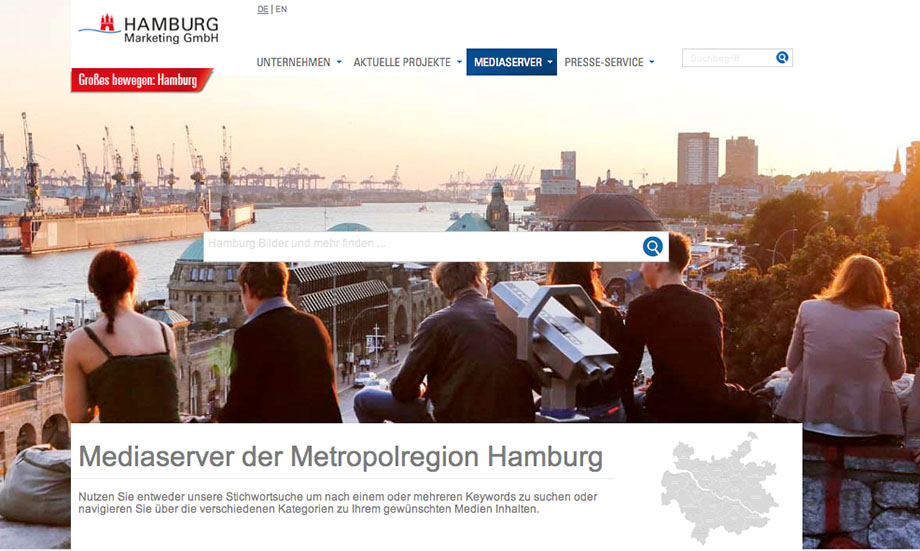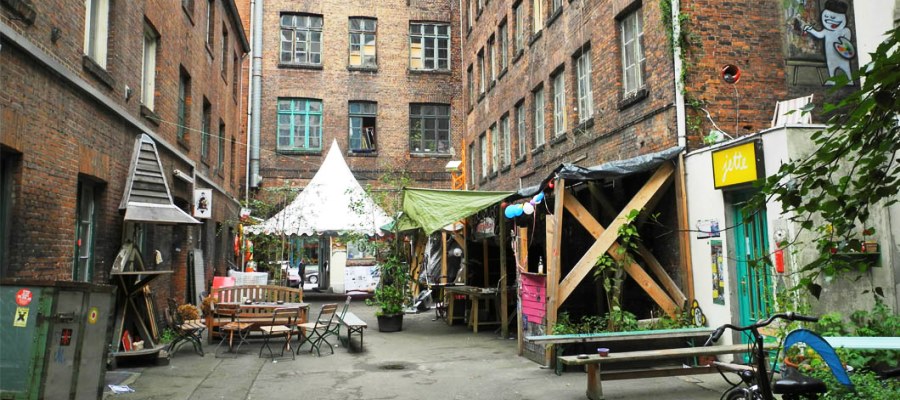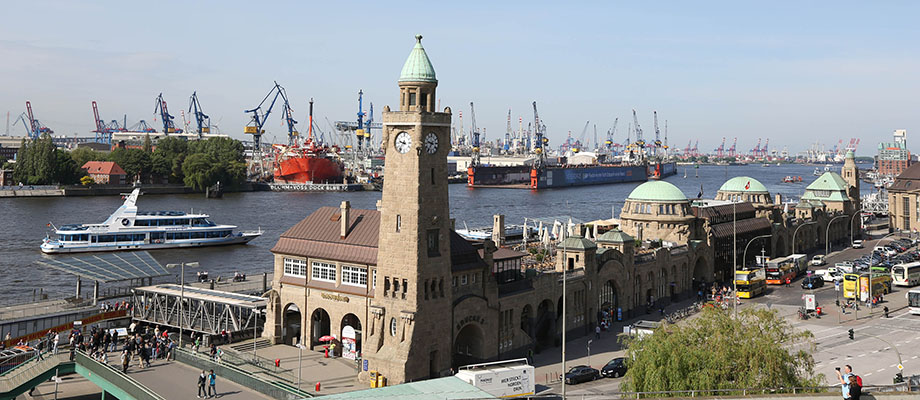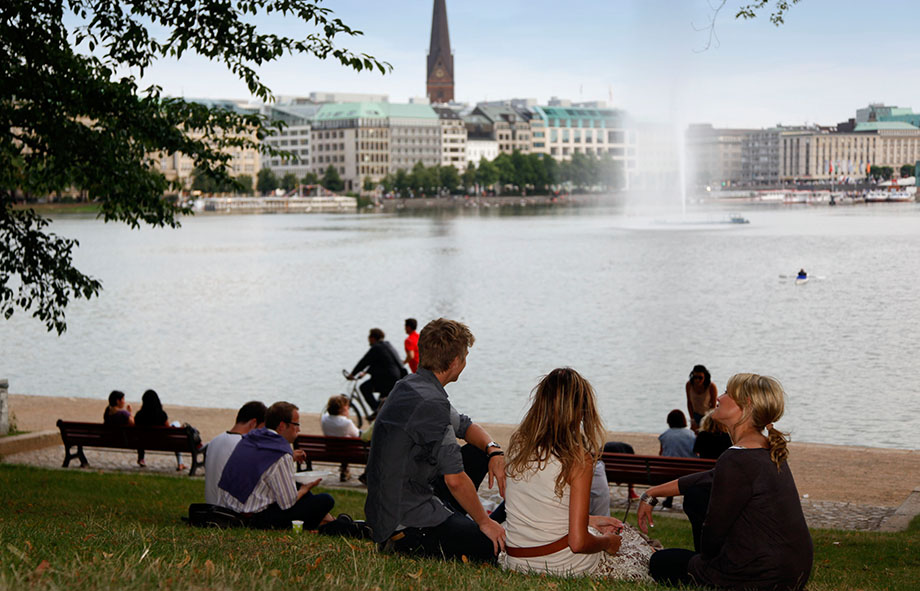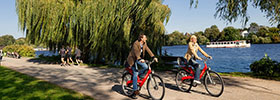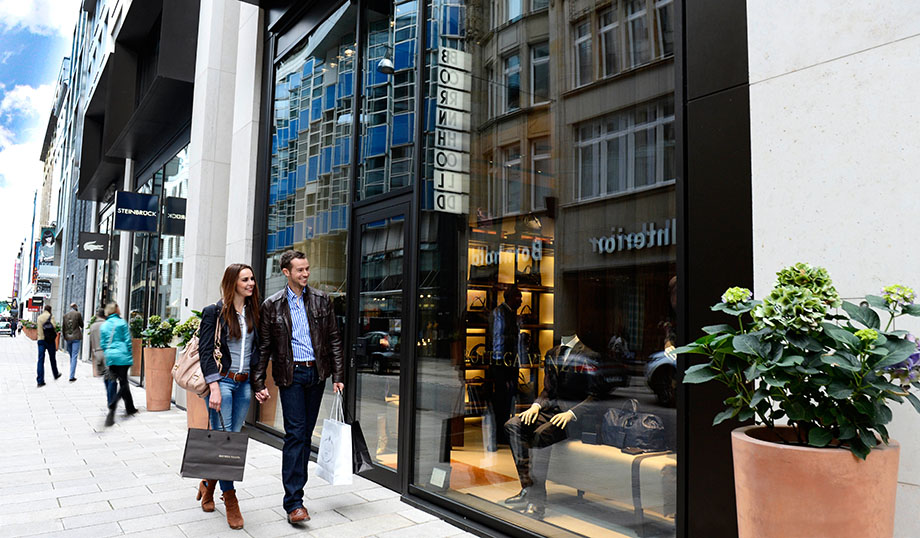Life in the Districts
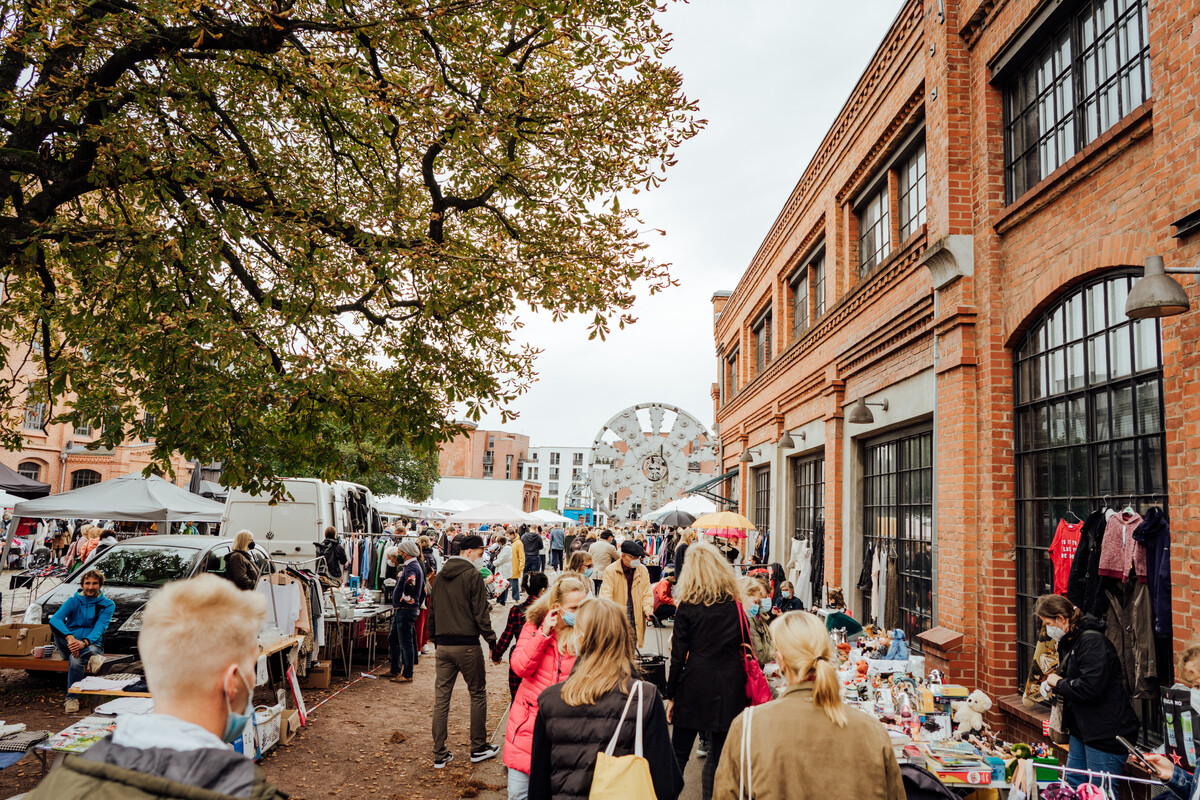
Would you prefer glamourous or alternative, international or tranquil, down-to-earth, maritime or hip? In Hamburg, you don’t have to settle for a particular lifestyle: the city’s 103 districts cater for any atmosphere you would expect from a vibrant, modern metropolitan region – ranging from lively urban settings to idyllic rural neighbourhoods.
With more than 1.7 million inhabitants, Hamburg is Germany’s second biggest city just after Berlin. More than 30 percent of Hamburg residents have a migrant background. The city’s cultural diversity has a long tradition: for centuries, people from around the globe have been arriving in Hamburg via the port. Depending on their chosen place of residence, these expatriates contribute to the cultural life of the city’s districts.
Hamburg is shaped by the Alster and the Elbe, and a journey along the banks of these two rivers reveals the alternative faces of Hamburg. The Elbe runs through the city from east to west, past industrial and commercial sites and residential areas, and through the port setting, and the modern architecture in the city centre, and on through the lively St Pauli quarter, past dykes and beaches, parks and orchards until it finally reaches its North Sea estuary. In contrast, the Alster flows from the north of Hamburg through the quiet district of Poppenbüttel to the south, past unpretentious, quiet districts such as Lokstedt and Alsterdorf, and through more upmarket areas such as Eppendorf, Rotherbaum and Harvestehude, and then joins the Elbe in the magnificent city centre.
With around 40,000 millionaires, the Hanseatic City of Hamburg is one of the richest cities in Germany. This affluence is reflected in the splendid villas in residential areas such as Harvestehude or Blankenese, impressive Kontorhaus buildings and elegant shopping streets in the city centre and the sparkling new apartments and prestigious buildings of the HafenCity district. And yet, from a tourist’s point of view, these luxurious quarters of Hamburg compete with numerous other districts such as the Schanzenviertel and St Pauli, which are characterised by port workers and industrial craftsmen and a lively, multicultural street scene. This is where urban trends are developed and lived, and these trends are made public at a later stage by the media.
However, unlike other cities, Hamburg is compact enough to allow you to quickly jump between these different worlds. To experience the larger picture within a few hours, it often takes no more than an extended stroll through the city.
Hamburg’s Districts In A Glance
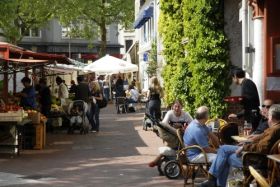
Altona is one of the most vibrant districts of Hamburg. People from different backgrounds, families and singles, as well as artists and freelancers feel at home here. This diversity is best experienced during the annual cultural festival altonale. During the summer months, Altona has many other assets up its sleeve: various squares and parks invite you to barbecue and relax, and the Elbe is within easy walking distance. In terms of cultural institutions, Altona boasts the Altonaer Theater, the cultural centre Fabrik, the Zeisekino cinema and the Altonaer Museum – as well as numerous off-venues in the narrow side streets in the quarter of Ottensen. Its great choice of restaurants and retail shops, its central location, its stock of lovely period apartments and its neighbourhood atmosphere make Altona one of Hamburg’s most popular residential areas.
Barmbek is mainly a residential area with a mixed demographic structure. The district seems to incorporate the different faces of the city and displays them as if under a magnifying glass: while some areas seem rather noisy and hectic, other areas are quiet, green and idyllic – after all, the Stadtpark is right on your doorstep. Is it throbbing urbanity or rather a village-like atmosphere that you are looking for? In Barmbek this often depends on which side of the street you are. Situated between the Osterbek canal and the Eilbek canal, the “Komponistenviertel” exudes a peaceful atmosphere – despite the fact that it is surrounded by two major roads. It is therefore one of Barmbek’s most popular residential areas. To the south you will find the Hamburger Meile, a shopping centre that was refurbished but only a few years ago. Barmbek is also home to two prominent cultural Hamburg institutions, the Kampnagel theatre and the Museum of Labour.
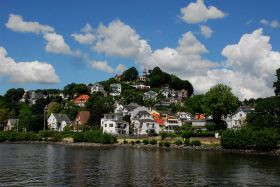
If there is a picturesque district in Hamburg, then it is the Elbe suburb of Blankenese. The former fishermen’s and navigators’ village in the west of the city is one of Hamburg’s most affluent neighbourhoods. Eminent shipowners and merchants built their villas and mansions here in the 18th and 19th centuries. Their expansive estates were later converted to parks, which today are open to the public. In addition to Blankenese’s magnificent parks – among them Baurs Park, Schinckels Park and Gosslers Park – the “stairs quarter” with its winding streets and ascending rows of historic houses is well worth visiting. The Elbe beach at Blankenese is one of Hamburg’s most beautiful beaches. And if you take the ferry over the Elbe to the opposite bank, you will reach Cranz, which is part of Europe’s largest enclosed fruit-growing area and a popular destination for countryside outings.
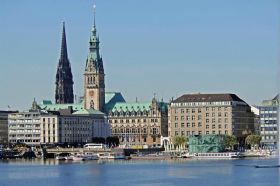
With its magnificent architecture, its elegant boulevards, the Inner Alster Lake and the canals behind the town hall, Hamburg’s city centre is a real gem. The area between the Gänsemarkt square and the central train station is lined with shopping galleries and arcades as well as eminent department stores such as the Alsterhaus and many other fashion retailers. An exclusive shopping experience awaits you on Neuer Wall, a side street that is home to major luxury brands such as Montblanc. From here, Hamburg’s Kunstmeile, which includes some of the city’s leading exhibition venues, is just a short walk away. Quite a different picture awaits you in the Gängeviertel, an area in the city centre that has been attracting Hamburg’s off-scene artists since 2009. The Grossneumarkt square invites you to explore the local art galleries and restaurants, as well as the time-honoured jazz venue the Cotton Club.
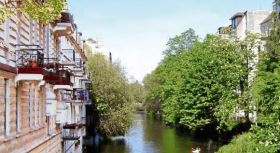
Eppendorf is one of the most popular residential areas for families from the upper middle class, well-to-do singles and other higher-income earners. The district is located in close proximity to the Alster Lake and the Stadtpark. The district’s main boulevard is Eppendorfer Landstrasse, a road lined with countless retail shops, magnificent houses, fancy boutiques and exquisite restaurants. It leads all the way to the Eppendorfer Mühlenteich – a small body of water where the famous Alster swans come to hibernate. On Tuesdays and Thursdays, the weekly Isestrasse gourmet market is held underneath the railway line. Located in the southwest of Eppendorf, the University Medical Center Hamburg-Eppendorf (UKE) is one of the city’s largest and most renowned hospitals.
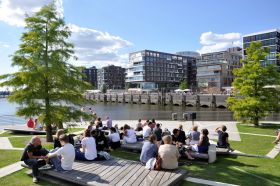
The maritime HafenCity district with its contemporary architecture will increase the area of Hamburg’s city centre by 40 percent by the year 2025. In the west, the façade of the Elbphilharmonie towers above the River Elbe. In the centre, the HafenCity University (HCU) has opened its gates. Approximately 1,500 residential units from luxury flats to family-friendly housing projects are completed. 500 companies have moved into their office buildings – among them the award-winning Unilever-Haus, the SPIEGEL publishing house, as well as the German office of Greenpeace. With its new public squares, around 10 kilometres of promenades, the historic museum harbour and excellent restaurants, the HafenCity has turned into a popular destination – especially for all those cruise passengers who disembark in the HafenCity terminal.
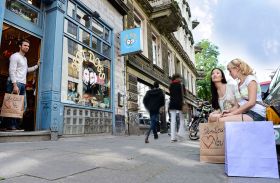
Surrounded by the exhibition grounds, the Schlachthof and the FC St. Pauli football stadium, the Karolinenviertel is one of the city’s most extraordinary quarters. Its main “boulevard” is Marktstrasse, which is packed with cafés, snack bars and small retail shops. Here you will also find studios and boutiques of local fashion designers, whose merchandise ranges from elegant and exclusive to fair and green. The artists’ house Vorwerkstift and the Hinterconti art gallery are among the Karolinenviertel’s long-established off-scene venues. In close proximity to the Knust, a concert venue and club, you will find several pubs and bars such as the Dschungel, the Karo-Eck, the Yoko Mono, and the Kitty. The laid-back atmosphere is typical of the Karolinenviertel, which is considered to be a relaxed nightlife oasis between the adjacent neighbourhoods of St Pauli and Schanzenviertel.
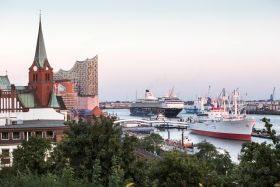
The Portuguese Quarter adjacent to St Pauli evolved in the 1970s, when Portuguese and Spanish immigrants settled here. Since then, several Iberian restaurants and cafés have been opened here. While the Portuguese Quarter is still rich in culinary establishments, the ratio of Portuguese restaurants has decreased considerably. However, the number of Scandinavian seamen’s churches has not decreased over the years. The Norwegian, Danish, Finnish and Swedish churches on Dietmar-Koel-Strasse are well worth visiting especially during the festive season, when these communities host their annual Christmas markets. The quarter then exudes a truly pan-European flair. Would you prefer grilled fish and a Galão – or perhaps a reindeer stew and a Finnish sauna? All of this and more is but a few minutes’ walk away.
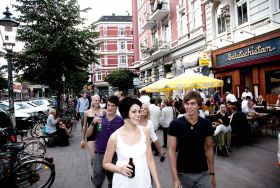
The Schanzenviertel is characterised by the Rote Flora, a cultural centre that has been occupied since 1989 and continues to represent local resistance against the ongoing gentrification of the neighbourhood. And yet the transition of the Schanzenviertel from former working-class district to hip neighbourhood seems unstoppable. Today, the Schulterblatt and its side streets offer a mix of international restaurants, cafés, boutiques and bars. Freelancers from the creative industries meet in the Betahaus, and advertising and online agencies have settled in old industrial buildings. At night and during weekends, the Schulterblatt with its bars, clubs, live gigs and party nights now competes with the Reeperbahn entertainment mile. During summer, alternative student crowds gather in the Schanzenpark to engage in football, Frisbee and slacklining or an open-air screening at the Schanzenkino unterm Sternenhimmel.
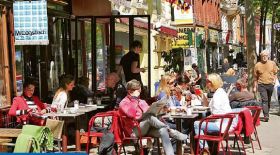
St. George is located centrally, multicultural, glitzy and full of contrasts: at the Alster lake the rich and famous reside in the Grand Hotels Atlantic Kempinski and Le Royal Meridien while at Hansaplatz, Steindamm and the main train station you can see tourists and travelers. Only a few steps away are the Baroque style German Schauspielhaus, the Ohnsorg Theater and the Museum of Arts and Crafts, with its significant collections from antiquity to the present. In between, in the Lange Reihe, the heart of St. Georg, is pulsating with neighborhood life. The string of cafes, pubs and restaurants from noble to rustic is interrupted by an Indian supermarket, the book shop Männerschwarm and many boutiques and shops of high curiosity factor. The street is firmly in gay and lesbian hand. Well-built men with tight-fitting T-shirts sit over coffee and cake in the cafe Gnosa.
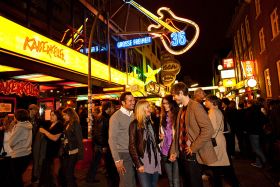
Rarely it happens that a district is more famous than the city it is located in. The Reeperbahn in the district of St Pauli enjoys a reputation as a world-famous entertainment mile, and its red-light district and the stories surrounding its seedy past are legendary. In the 1960s, St Pauli was renowned as a hub of pop culture because of its density of music clubs such as the Star Club, the Indra, the Top Ten, and the Kaiserkeller. This tradition was taken up again in 2006 with the launch of the Reeperbahn Festival. But even though St Pauli boasts more pubs, restaurants and clubs than any other district, it is also a residential area – for old-established workers, artists, bohemians and all sorts of people who do not mind the 24-hour bustle of the Reeperbahn and its side streets. Those who live here certainly have a little bit of rock ’n’ roll in their blood …
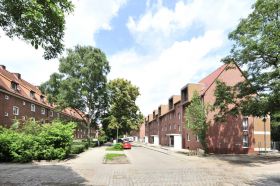
The port and the Elbe have always played a key role in Wilhelmsburg, which is home to 50,000 people and is thus the most populous district of Hamburg. Located south of the River Elbe, Wilhelmsburg is considered Hamburg’s problem child and hope at the same time. While the western part is characterised by industrial and utility buildings, the rural southeast invites you to take a stroll through the countryside and explore the Heuckenlock nature reserve. It is yet to be seen whether Hamburg will manage the desired “Leap across the Elbe” and attract Hamburgers to the Elbe island of Wilhelmsburg. Since the 2000s, the International Building Exhibition (IBA) and the International Garden Show (igs) have brought exciting pilot projects from the realms of architecture and urban development to the district – and each summer, the music and art festival MS Dockville lures tens of thousands of young people to Wilhelmsburg.
